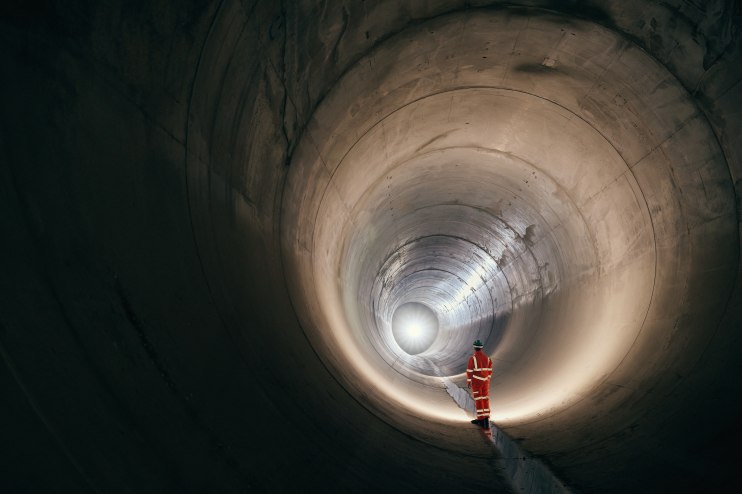‘Super sewer’ boss hails opening of wastewater network

London’s long awaited ‘super sewer’ opened today, marking a major milestone in efforts to protect the River Thames from sewage pollution.
Designed to handle storm overflows, the Thames Tideway Tunnel opened its gates today, capturing 589,000 cubic metres of sewage within 24 hours during heavy rainfall in September.
The 25km ‘super sewer’ has a total capacity of 1.6 cubic metres, whilst also connecting to the 6.9km Lee Tunnel, which spans from Stratford to East Ham.
Valves, which operate like giant gates, are now open at four of the 21 locations that make up the system, with the rest due to come online in the coming months, when the sewer will reach full operating capacity.
Once fully operational in 2025, the £4.5bn project is expected to reduce sewage pollution in the Thames by 95 per cent, significantly improving water quality in central London.
Andy Mitchell, Tideway CEO, Andy Mitchell, hailed the milestone as “an important moment for the Thames”, noting that after eight years of construction, the system is now working to protect the river.
Testing continues as more sites are connected, with a full operation scheduled for its completion by 2025. This news follows cost pressures due to engineering challenges back in 2018, which haven’t seemed to stop the tunnel’s construction.
The project involves multiple contractors and system integrators, and will be operated by Thames Water as part of London’s wastewater network.
Thames Water’s CEO, Chris Weston, highlighted the broader impact of the project, including £700m in prior investments like the Lee Tunnel, which have already improved water quality in parts of the Thames Basin.
Environmental advocates, including Thames21 CEO Chris Coode, welcomed the tunnel’s progress, seeing it as a crucial step towards cleaner rivers in London.
Government officials, including water minister Emma Hardy, also praised the initiative, which is viewed as a critical development in combating pollution in the capital’s waterways.
